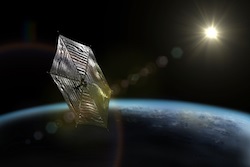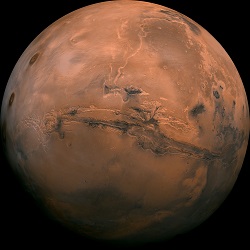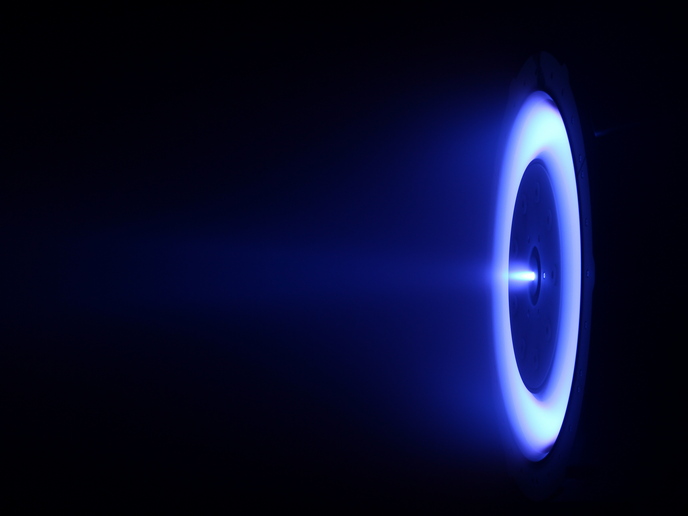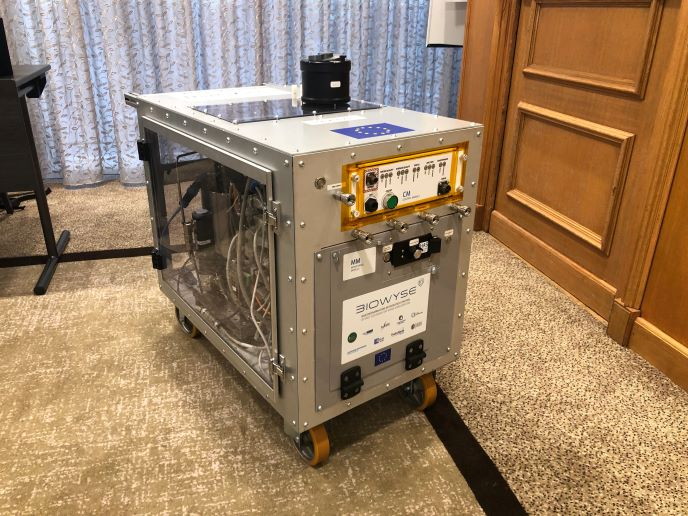Solar sailing for SSA applications
There is more to space propulsion than rocket engines. One alternative lies in solar sailing, which has been successfully demonstrated in missions such as JAXA’s IKAROS, NASA’s NanoSail-D2, and the Planetary Society’s LightSail-1. Its incredible potential can probably best be summarised in one figure: up to 1/5 the speed of light – which is the speed that can theoretically be reached using this propulsion method. “With its ‘propellant-less’ nature, solar sailing is a breakthrough in space propulsion as it enables long-lifetime and high-energy mission concepts. Proposed ideas include missions over the poles of the Sun for heliophysics, hovering along the Sun-Earth line for space weather forecasting, and parking the sail above the Earth’s orbit for high-latitude navigation and communication,” notes Dr Jeannette Heiligers, research fellow at the Delft University of Technology and coordinator of the S4ILS project. There is, however, a common trait between these ideas: their definition within the Sun-Earth system. According to Dr Heiligers, it’s as if the research community had somewhat overlooked the possibility of using solar-sail technology much closer, within the Earth-Moon system. “In this context, my mission for the S4ILS project was to explore the potential of solar sailing in the Earth-Moon system with a particular focus on applications in the field of Space Situational Awareness (SSA). There is an important gap to be filled there, as shown by GPS signals and satellite communications disruptions due to solar storms, by the 2009 Iridium/Cosmos satellite collision, or by the asteroid that entered Earth’s atmosphere over Russia in 2013,” she explains. Dr Heiligers and her collaborators performed a thorough and systematic investigation, calculation, and cataloguing of solar sail periodic orbits in the full non-linear Earth-Moon system. They assessed those orbits for the application of SSA, and they investigated the performance of different solar-sail configurations for orbit control – from the traditional flat, often square-shaped solar sail or the so-called heliogyro – a solar-sail configuration that divides the sail area into a number of long, slender blades which are deployed from a central hub and flattened by spin-induced tension. S4ILS’ research can have applications in various fields. One example would be the design of a novel solar-sail constellation around the Earth that could provide near-continuous coverage of the entire Artic or Antartic region with just two satellites. This could, in turn, enable studies of global climate change, space weather monitoring and forecasting activities. Besides SSA-focused research, the project also enabled cooperation between Dr Heiligers and the NASA Langley Research Center. NASA indeed developed a new solar-sail technology for use in small satellite platforms (CubeSats), and Dr Heiligers has been looking into the possibility to use this technology to monitor the asteroid 2016 HO3. “It appeared that solar sailing could not only deliver the spacecraft to the asteroid faster than traditional, fuel-consuming forms of low-thrust propulsion (an ion engine), but also that the required propellant consumption by the ion engine exceeded the expected propellant capacity onboard the CubeSat. This is a clear demonstration of how solar sailing can enable a mission that is not feasible with traditional forms of propulsion,” Dr Heiligers concludes.







